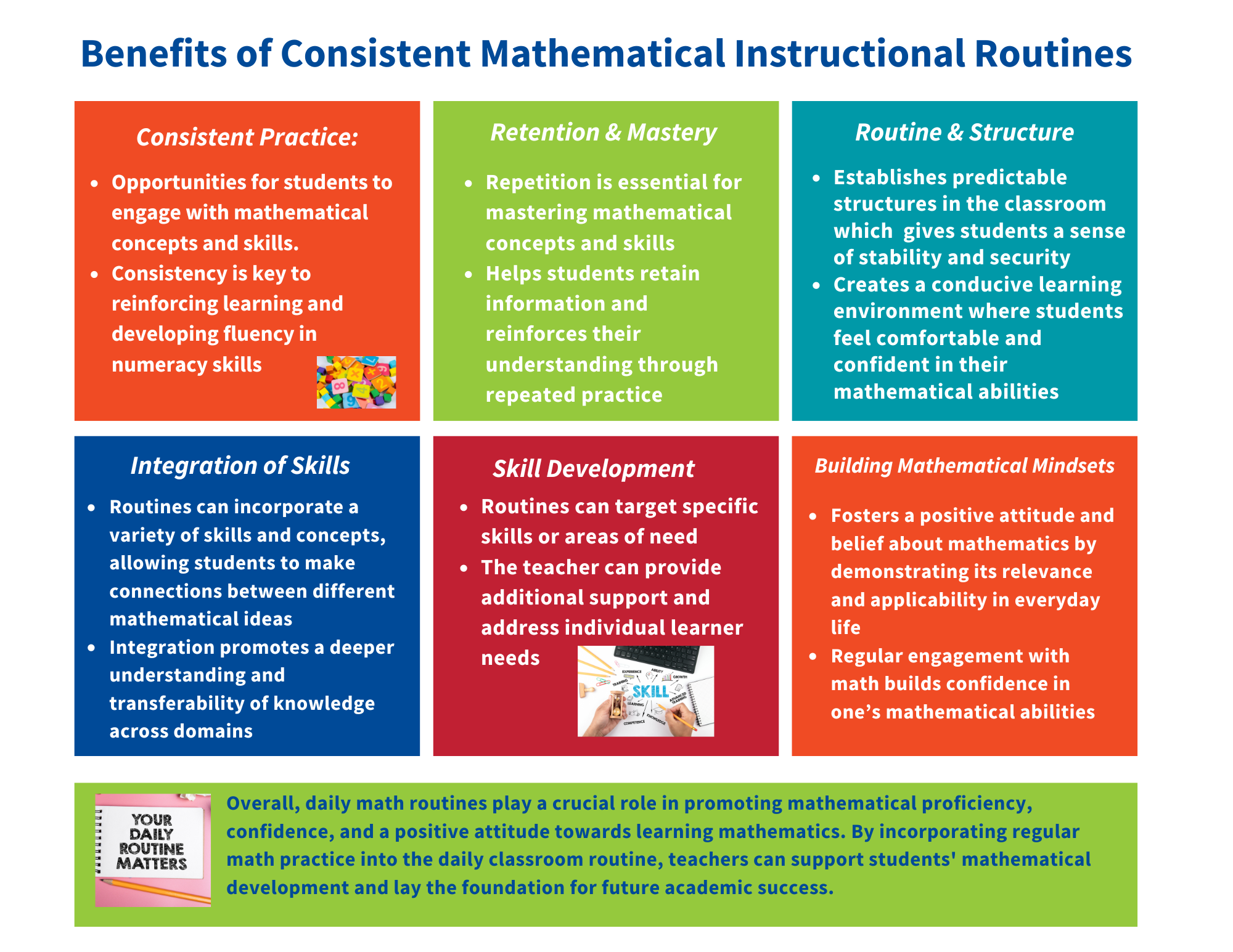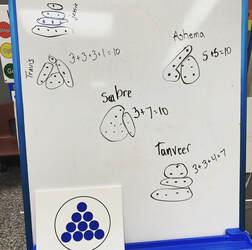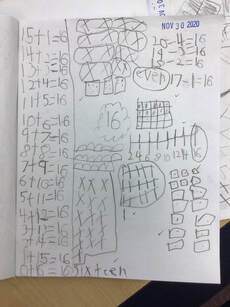Instructional Routines support curricular competencies across math strands. These provocations can be used as short ‘math talks’ that follow a common, predictable discussion framework where the teacher takes on the role of facilitator and students share their reasoning and strategies with one another.
Routines and provocations provide an opportunity:

to include regular practice of foundational numeracy concepts
to build a community and culture of learning
to focus on noticing and listening, and being responsive to students’ understandings and reasoning
to provide a focus on the curricular competencies
These routines can serve as 15 to 45+ minute daily experiences to help students develop a firm foundation in mathematics, including place value understanding, number sense, computational fluency, patterning and spatial reasoning, and can spiral throughout the year in different contexts.
Clothesline Math is a routine in which students place moveable cards with either numbers or representations of quantity onto a length of string (open numberline). Cards can also be stacked to represent equivalent quantities.
The discussion that could take place during clothesline math may include order of numbers/quantities, missing numbers, fixing incorrect placement of cards, or even using the clothesline to play 'Guess My Number'.
Guiding Questions: Where does ___ belong? Is ___ greater or less than ___? How do you know? What is the difference/distance between ___ and ___? Which card (value) is equivalent to ___? What is two more/less than ___?

Dot Number Talk involves an arrangement of figures, such as dots, which is displayed for students to determine 'How many?' and discuss how they see the quantity. The teacher facilitates the conversation, with the intention of moving students from a counting strategy to the use of perceptual subitizing (recognizing smaller parts) and composing (combining the parts to determine the whole quantity). Flashing smaller dot scatters (up to ten) for a few seconds helps students develop working memory and visualization skills. Larger dot scatters can simply be displayed with the teacher modelling the written equation that represents student thinking.
Guiding Questions: How many do you see? How do you see them? Did you need to count? What parts did you see automatically? Do you see it a different way?
Steve Wyborney's 100 Subitizing Slides & 10 Challenge Patterns is an excellent resource!
An important variation and 'next step' to a dot number talk is to determine missing or covered parts of the image. This leads to students' understanding and visualization of operations.
Resources to support this:
Part Part Whole Cards to 9
Part Part Whole Cards 10 to 20
Visualizing Number Combinations
Splat!

Number of the Day is a routine where a random number is chosen by the teacher. On whiteboards, or in math journals, students represent the number in as many different ways as they can through pictures, words or numbers, including number sentences. Ideas are then shared among the class, with the teacher modelling proper notation and teaching language and conventions as they occur in the discussion.
Guiding Questions: Where do you see this number in the world? How many ways can you break apart the number? Can you break the number into more than two parts? Do you see a pattern in your ideas? Does what you know about another number help you represent this number? Can you write an equation with a different operation?
Constraints can also be added such as using more than two numbers, using a particular operation, or using no numbers.
This routine could also become a Mystery Number routine where students create clues for their number.
